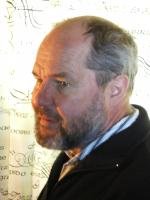Article,
The GAIA theory: from Lovelock to Margulis. From a homeostatic to a cognitive autopoietic worldview
Rendiconti Lincei, 23 (4): 375--386 (Dec 1, 2012)
DOI: 10.1007/s12210-012-0187-z
Abstract
This work consists of two parts. The first presents the state of art concerning the history and the reception by the scientific community of the Gaia hypothesis introduced in the 1970s and which evolved, in time, into theory and quasi-science, i.e., Earth system science. The original Gaia supposes that the temperature, oxidation state, acidity and certain aspect of rocks and waters are at any time kept constant and that this homeostasis is maintained by active biogeochemical feedback processes (first-order cybernetics) operated automatically and unconsciously by the biota. In turn, the probability of life's event and its survival should be linked to processes regulated by the second thermodynamic principle, in its own dynamical equilibrium. This consists in maintaining the organisms at a low level of entropy, through energy-dissipative leakage into the surrounding environment. Life and the environment are so closely coupled that evolution concerns Gaia, and not the organisms or the environment taken separately. Since the end of 1980s, Lynn Margulis, Lovelock's longstanding co-author, proposed replacing Gaia's homeostatic nature with an autopoietic and evolutionary one that is connected to second-order cybernetic processes. Margulis arrived at the Gaian paradigm shift, mainly based on her authority in the field of the microcosmos. This included symbiogenetic processes concerning the birth and evolution of microbiotic organisms at the planetary level, which led to the construction of macroorganisms and their properties that stabilize the environment. A close relationship between symbiogenetic and autopoietic theory (the latter proposed by Maturana and Varela in Autopoiesis and Cognition: the Realization of the Living, D. Reidel Publishing Co., Dordecht 1980) is represented by the fact that both theories refer primarily to the epigenetic--cytoplasmatic mechanisms in cellular constitution and evolution, and only secondarily to the established, DNA-mediated genetic code. It is the consequent lack of primeval genetic information that requires that both theories postulate the existence of cognitive--intentional properties of the living matter (Luisi in Springer 90(2):49--59, 2003) in the construction of the cell and of multicellular organisms. Conversely, traditional theory treats biological organizations as an epiphenomenon, that is, a result of casual processes leading to the constitution of genetic material responsible of cell constitution, duplication and sometime mutation--recombination for new phenotypic forms. The second part of this work consists of more speculative comments about some important articulations of the Gaian construct, in particular: (a) The apparent lack of information on the chemical--physical nature of living and inert matter and on their possible interaction in the construction of organisms and environment. (b) The substantial weakness in the descriptive processes leading to the auto-organization of the two terrestrial matrices (organisms and environment) that is Lovelock's engineeristic and physiological automatisms without consciousness and Margulis' cognitive symbiogenetic processes operating at elementary matter. Both hypotheses have been scantly accepted by established science. The latter appears to privilege the theory of spontaneous and istantaneous cooperative phenomenon between elementary particles, at the base of the change from chaos to order and from one ordered state to another, both in physical and living realm. (c) Finally, the substantial underevaluation, operated by Lovelock in his holistic approach to the study of planet Earth, of the role played by the physical phenomenon of the distance interaction between quantum objects, leading to their entanglement. Such phenomena, apparently spontaneous, istantaneous and mediated by quantum field, have questioned the same objective nature of reality. Recently, Süsskind (interviews with P. Byrne, Scientific American, June 2011) noticed that the entanglement phenomenon allows obtaining the knowledge of everything about a composite system without knowing its singular parts: a possible form of holistic approach to planet Earth, well distinct from those proposed by Lovelock and Margulis on solely cybernetic basis.
